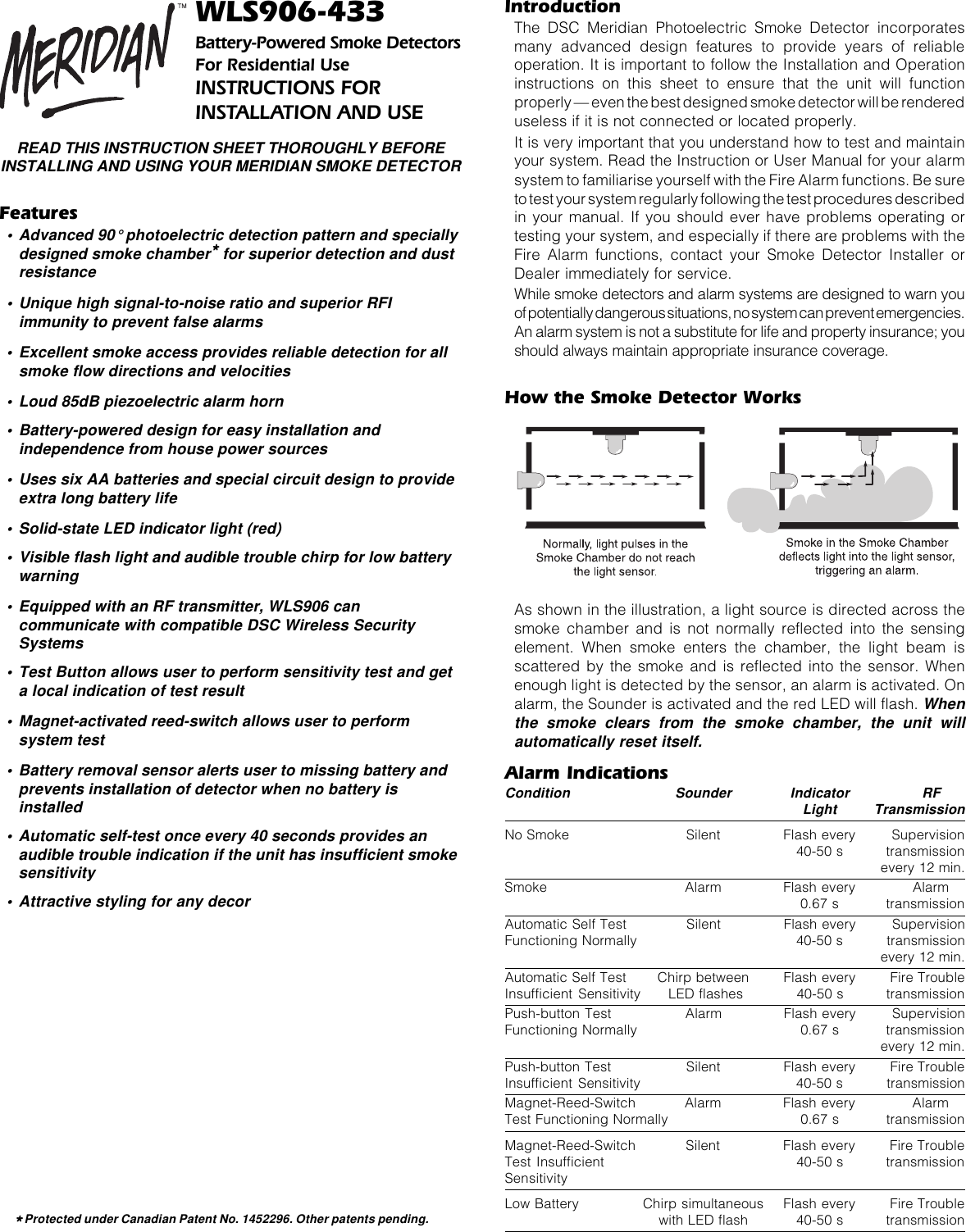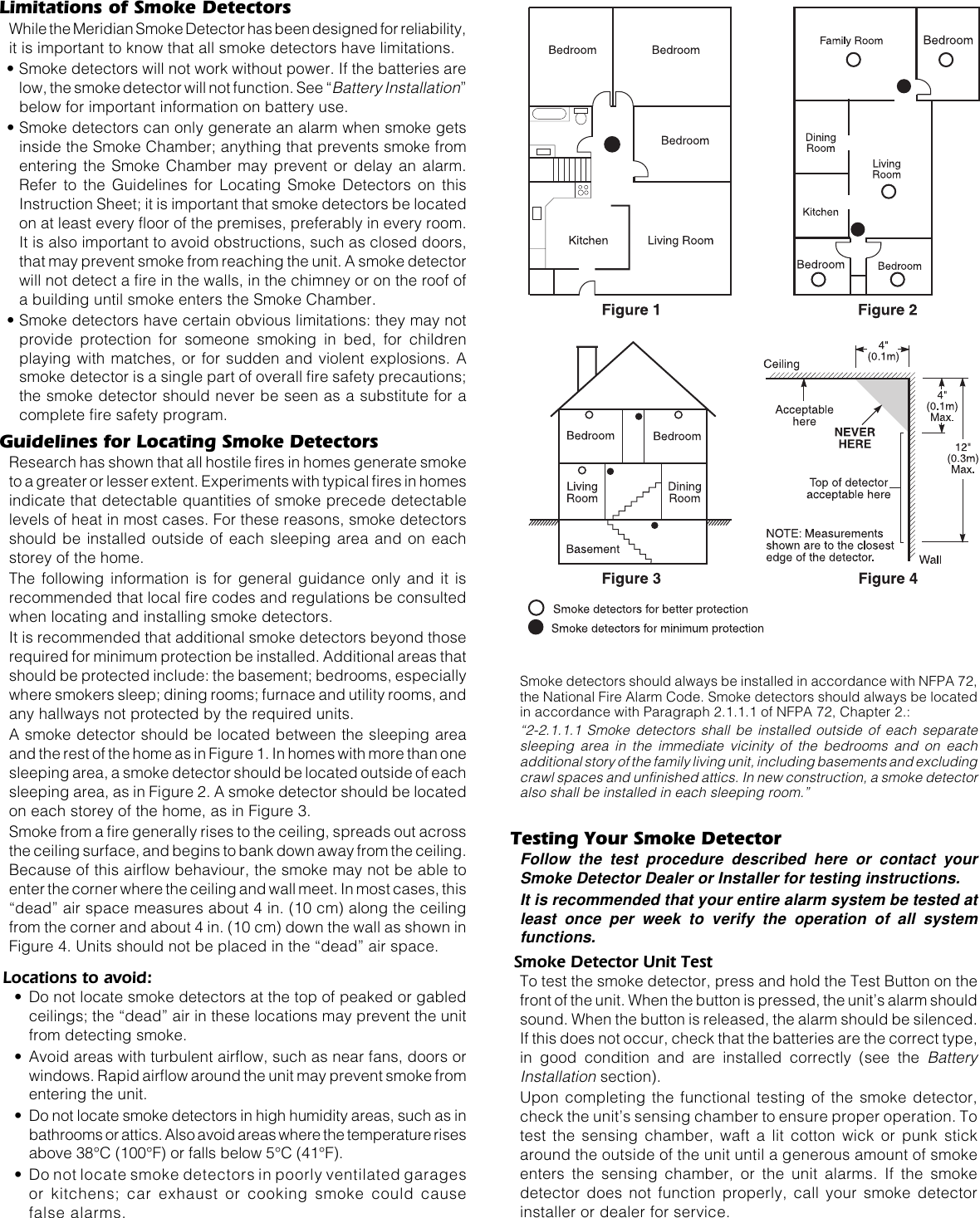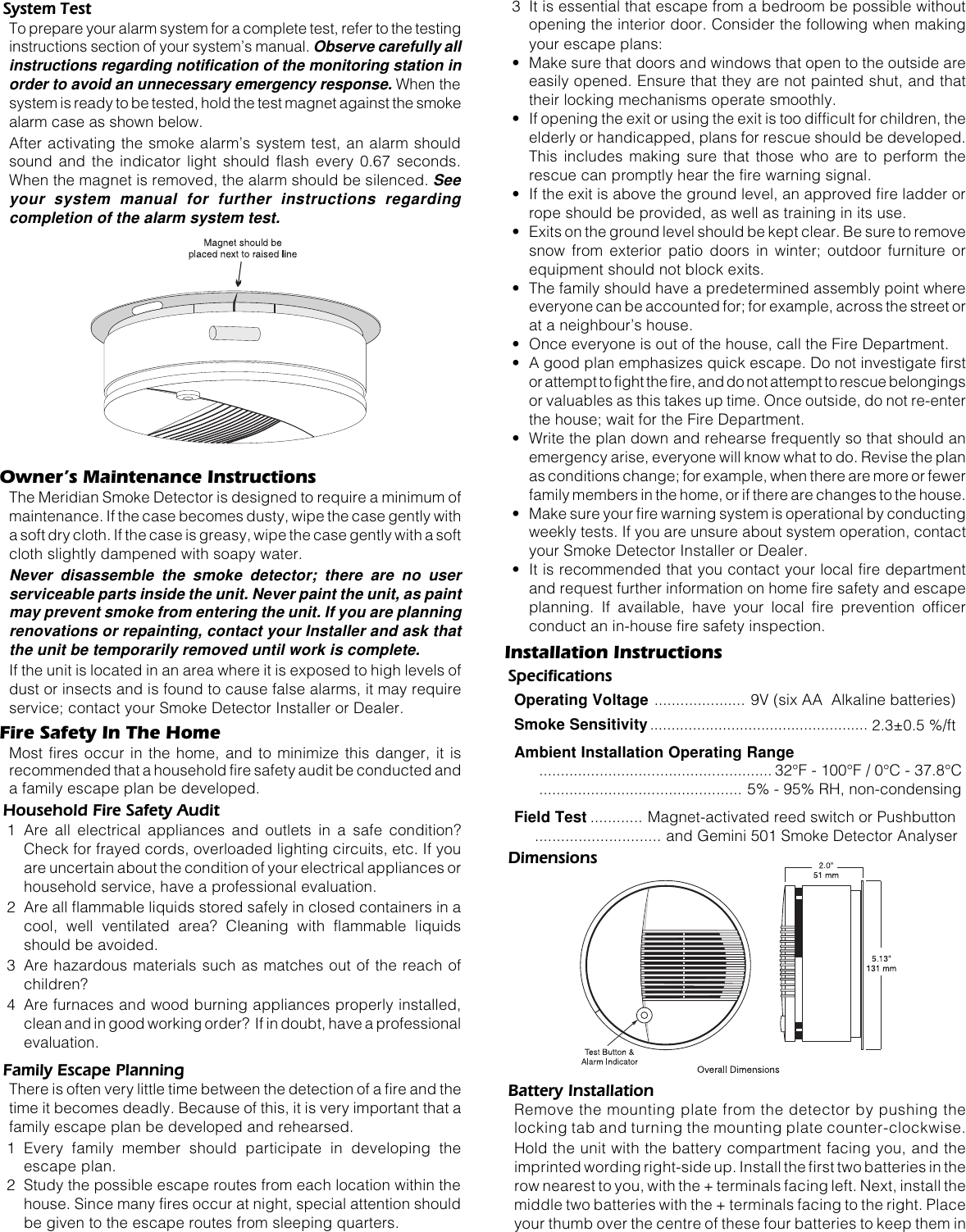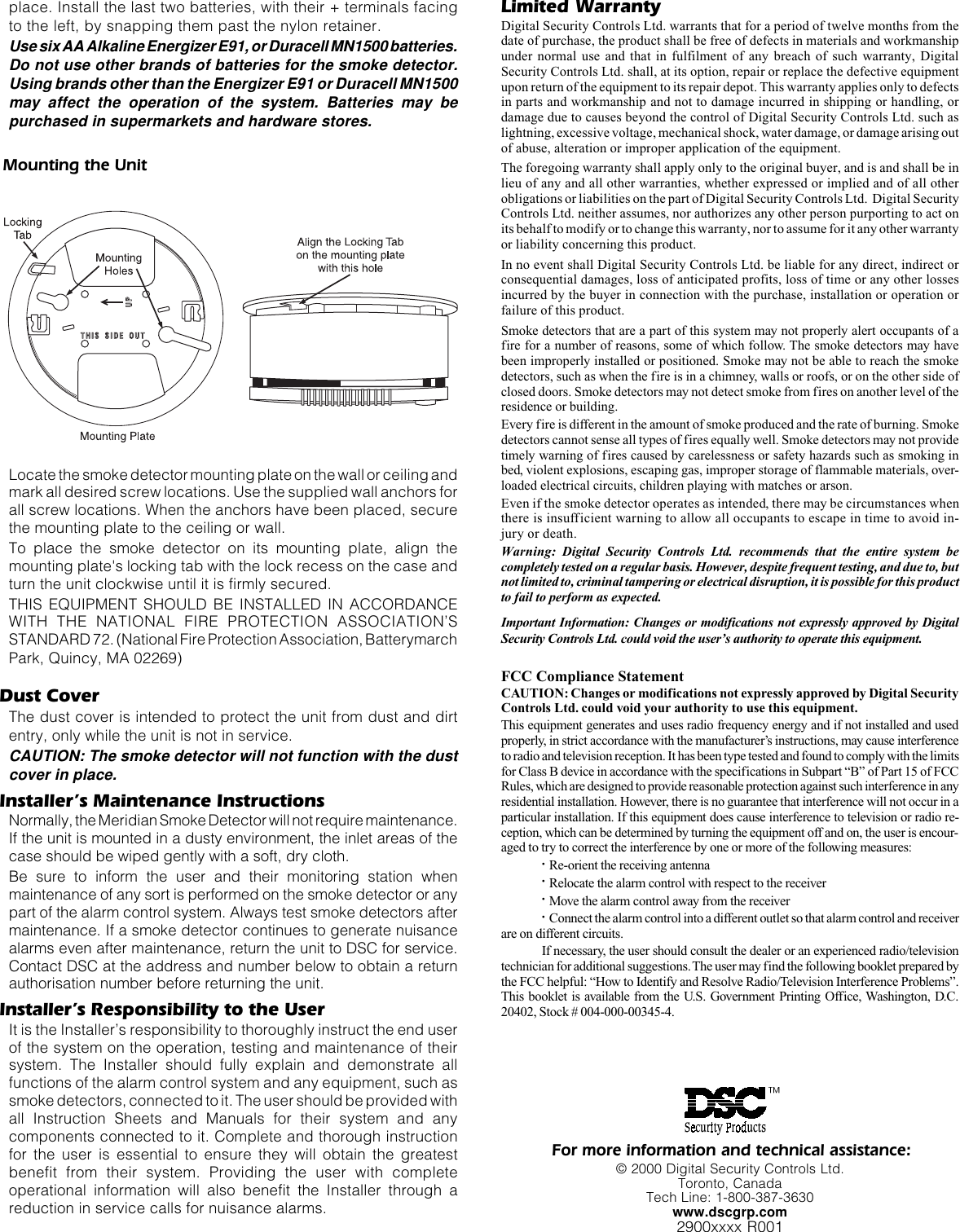Tyco Safety Canada 00NB906 Smoke Detector User Manual mrdn wls906 433 us ul inis eng 2900xxxx r001
Digital Security Controls Ltd. Smoke Detector mrdn wls906 433 us ul inis eng 2900xxxx r001
Contents
- 1. Users manual
- 2. Corrected user manual
- 3. Revised installation instructions
Users manual



